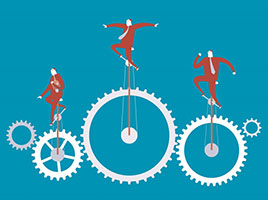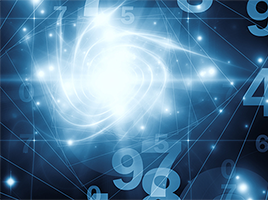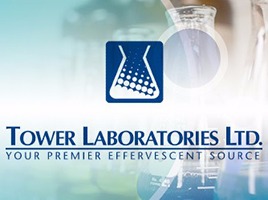[av_one_full first min_height=” vertical_alignment=” space=” custom_margin=” margin=’0px’ link=” linktarget=” link_hover=” padding=’0px’ border=” border_color=” radius=’0px’ background=’bg_color’ background_color=” background_gradient_color1=” background_gradient_color2=” background_gradient_direction=’vertical’ src=” background_position=’top left’ background_repeat=’no-repeat’ animation=” mobile_breaking=” mobile_display=” av_uid=’av-4al3xb’]
[av_video src=’https://www.youtube.com/watch?v=_z9XQmfnDhM’ mobile_image=” attachment=” attachment_size=” format=’16-9′ width=’16’ height=’9′ conditional_play=” av_uid=’av-jp3xynkw’ custom_class=”]
[av_textblock size=” font_color=” color=” av-medium-font-size=” av-small-font-size=” av-mini-font-size=” av_uid=’av-2w9rlb’ custom_class=” admin_preview_bg=”]
ERP is a software system that plans and schedules resources to optimize productivity, increase profits and reduce costs.
ERP can help you view operational data to identify the way your people work and ensure your business runs in line with this overarching model.
With everything from vendor relationships to work orders interpreted in the platform, you can easily balance supply and demand by automating many inventory management tasks.
ERP connects workflows across operational boundaries to help you streamline work, creates data visibility within your business and lets you build processes around that information.
1. Human Resources
Managing your employees should always be priority number one. Without them, you don’t have a company. Your HR ERP component should be able to handle the full spectrum of employee management, from onboarding to offboarding, and from benefits administration to timekeeping.
The biggest feature you need from an HR component is payroll software. Manually submitting payroll and issuing direct deposits is incredibly time-consuming and, frankly, not worth your time. Instead, an HR component automates payments, including tax and benefits deductions. With an integrated timekeeping feature, even payments to your hourly workers can be automated, so you don’t need to manually input their timesheets.
2. Customer Relationship Management
Managing your customers and leads needs to be your second highest priority, because without them, your business can’t survive, let alone grow. A customer relationship management (CRM) ERP component allows you to keep track of all of your customer and lead data within your ERP solution. The insights you can gain from a CRM help optimize your marketing and sales efforts.
One of the main uses of a CRM is tracking the buyer histories of your customers. With this data in hand, you can suggest additional purchases through cross-selling or upselling, or try to sell them a relevant product/service when they’re otherwise not as likely to buy. In addition, you can use a CRM to track the conversation history with leads, so you know who’s talked to them, when they talked and what they talked about. Using this data, you can more effectively lead them down the sales funnel by providing them with relevant marketing materials and making sure that sales reps never double-up by calling about the same thing.
3. Business Intelligence
Business intelligence (BI) is pretty new. At least, it is when it comes to standard ERP components. But considering how many businesses are attempting to create data-driven decision-making processes, it’s quickly become one of the standard ERP components. The BI component of your ERP software collects and analyzes data, providing you with actionable insights related to your business processes.
The best BI ERP components deliver those insights in reports. A good reporting feature is the most important in a BI, so you can make sense of the data it analyzed. Some reports come in the form of numbers in different tables. But the best reports are visual, allowing you to spot trends at a glance. Make sure that data visualization is possible with the BI components’ reporting features. Otherwise, those insights will be a lot harder to decipher.
4. Supply Chain Management
Creating an efficient supply chain isn’t exactly easy, even when deploying software to help you out. The supply chain management (SCM) component of an ERP system is one of the most crucial for this reason. You need the best SCM features to be able to optimize your supply chain, and that starts by collecting real-time data.
Real-time data allows you to keep tabs on your supply chain, so you can find and fix issues as they happen, rather than waiting until you receive the data a day or more after the fact. It also makes predictive analytics possible. The SCM component, with the aid of real-time data, can help with demand planning, so you can create an up-to-the-minute accurate production plan that meets demand, but doesn’t exceed it.
5. Inventory Management System
An inventory management component is one of the most collaborative ERP components. Inventory management works in tandem with the SCM component, but also dips its toes in other processes, such as sales and warehousing. This main purpose of these components is to manage order fulfillment and stocking a warehouse.
The best inventory management components come with tracking features that all but eliminate manual inventory control. These features include multi-level serial number tracking, revision level tracking and multiple units of measure per product ID or SKU.
6. Financial Management
Last but not least, we come to the component that deals with data from all of the other ERP components. Since every business process involves money in one form or another, whether it’s paying your employees or paying to ship goods, the financial management component works with all of the other components in your ERP system.
This component stores and analyzes all of your financial data, including accounts payable, accounts receivable, costs, budgets and forecasts. It helps reveal insights into your spending, so you can discover profit trends and times of unusually high spending. Then you can put that data to good use by changing whatever processes are causing lower profits or high spend, so you can maximize your profits while reducing costs.
[/av_textblock]
[/av_one_full]







